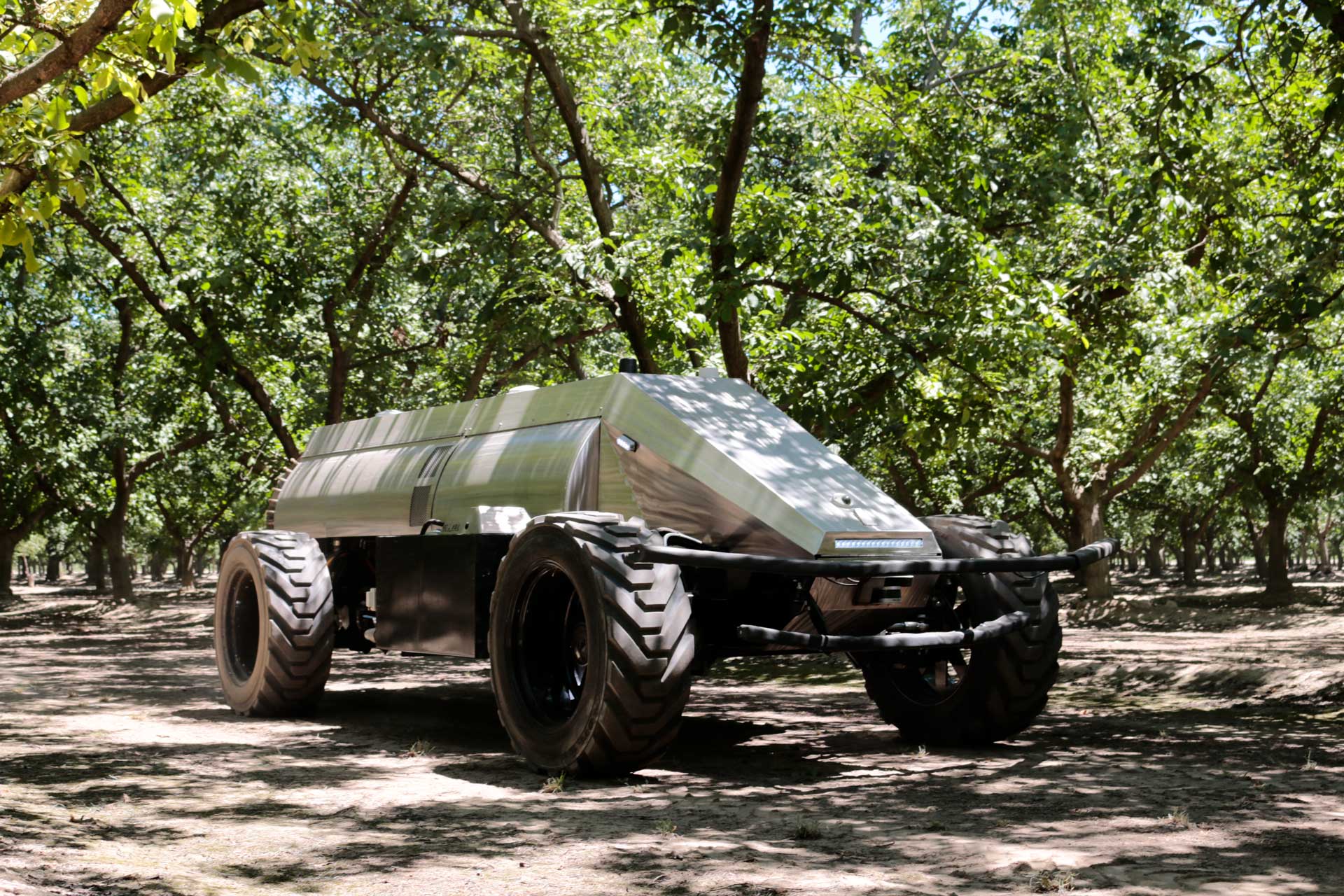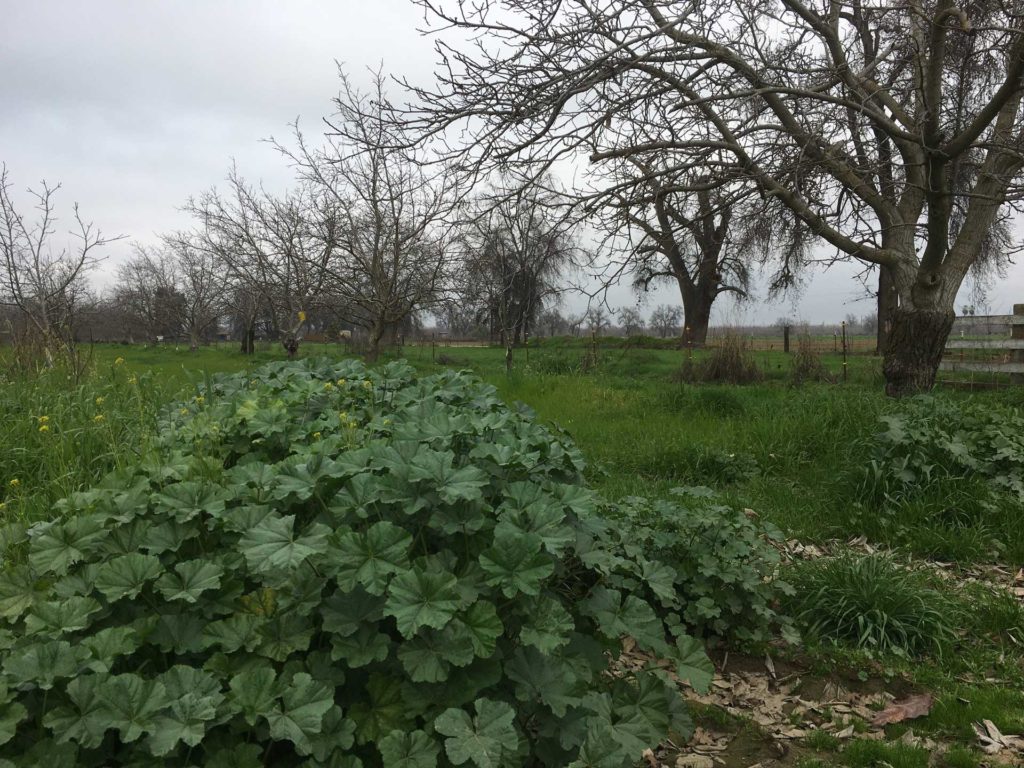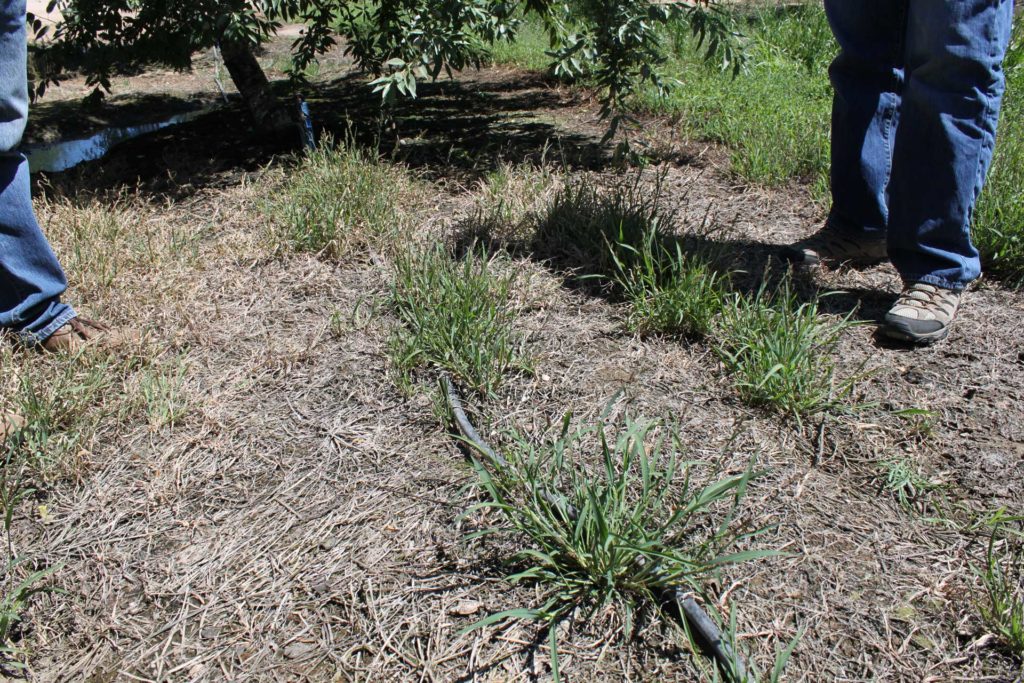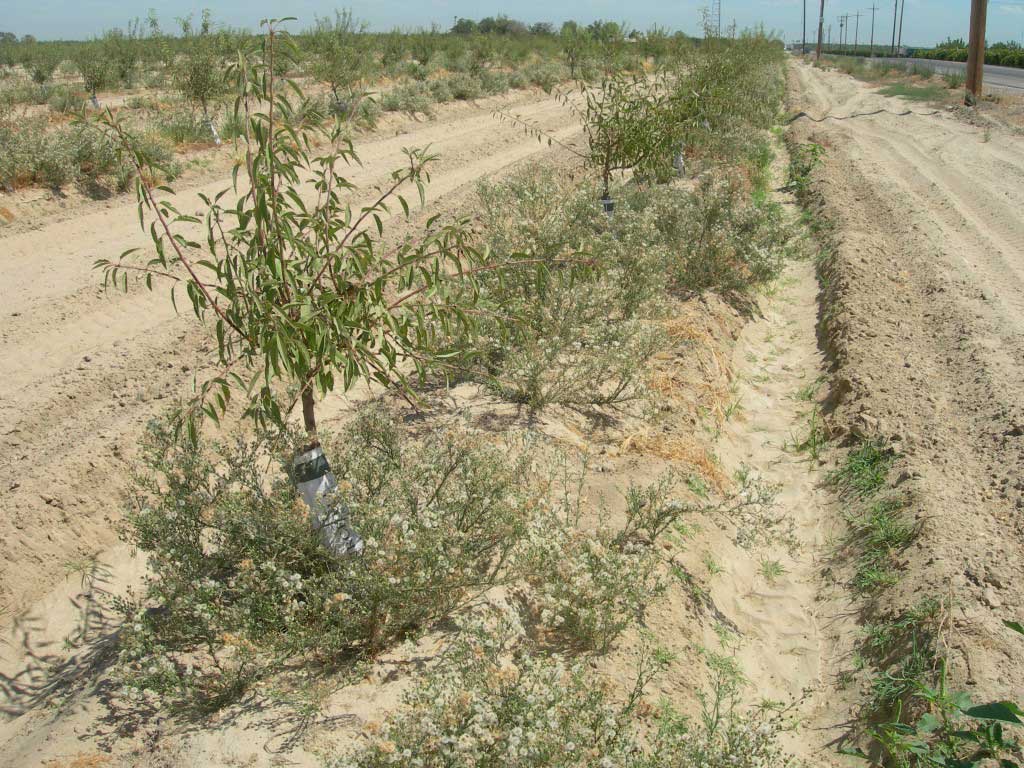
Sometimes a bigger hammer isn’t the best solution for our orchard weed management challenges,” said UC Cooperative Extension Weed Specialist Brad Hanson. “A bigger hammer doesn’t put a screw in any better than a small hammer. A screwdriver is the best tool for that job.”
Hanson uses that philosophy as the principal investigator on several research projects to find new ways beyond the use of broad-spectrum post-emergent herbicides to address weed problems in the orchard. Glyphosate is very commonly used in California orchard production systems for its broad weed control spectrum. In most tree nut crops, glyphosate is applied to about twice as many acres as the next most important herbicide active ingredient.
“Glyphosate is widely used because it is effective and is relatively inexpensive,” Hanson noted.
Glyphosate, however, has become controversial in recent years and growers and handlers are under increasing pressure to significantly reduce glyphosate in the products they produce and sell, according to Hanson.
“A cotton grower or other commodity crop may have little pressure, but a wine grower or a walnut grower could have more market-driven pressure,” he said.
In addition, some weeds have developed a tolerance for glyphosate, Hanson said, describing the process as “evolved resistance.”

New Strategies to Counter Tolerance
To limit the potential for glyphosate resistance, research at UC Davis is examining the effectiveness of different herbicide combinations in the winter and summer. The current focus is on using more pre-emergent herbicides in the winter to reduce post-emergent use in the summer, by as much as 50 percent. This seems to provide better weed control “and save growers some money,” according to Hanson, who conceded, “This is not an across-the-board solution in all cases.”
One of the eventual solutions to weed management may be found in the Cover Crop Project. Hanson and his collaborators at UC Davis and UC Agriculture & Natural Resources are looking into adding new plant systems to nut orchards as a way to maintain sustainability and soil and crop health.
“While the cover crop project has many potential benefits to the orchard production system, from a weed control standpoint, the simple idea here is to put in a plant system that is predictable and controllable to displace weeds that are more difficult to predict or manage,” Hanson explained. “In our current projects, we’re looking almost exclusively at winter growing crops. They have less of a chance of competing (with nut crops) by not using water at the same time, and utilizing sunlight and other resources when the orchard crop is dormant.”
Various plant combinations have been studied for use in orchards. A mustard pollinator mix has recently produced positive results.

Autonomous Orchard Sprayers for Managing Weeds
Hanson is intrigued by the possibility of using autonomous vehicles in weed management.
“There’s a real incentive with some crops to use more robotics,” he said. “Right now, that kind of technology for weed control is already having an impact in vegetables and other crops highly dependent on hand weeding due to the cost and availability of hand labor.”
Hanson believes the widespread use of robotics for orchard weed control may be “a ways off, but I think there’s interest. I think automated vehicles will have some opportunities in orchards.”
Hanson discussed four robotic devices at a field day in January, including the GUSS Autonomous Orchard Sprayer.
“GUSS sprayers do not need to take breaks, they simply need to be filled with diesel and spray material and they will continue working day and night,” said Gary Thompson of GUSS Automation. “Currently, GUSS is being used for foliar applications in orchards, however, we do plan to begin doing herbicide applications as well.”
The Kingsburg, CA-based company plans to add a spray boom to the back of its current machine, as well as a lower volume chemical pump, which will enable growers to continue using products like paraquat.
“With conventional tractors, it is impractical, if not impossible, to get all your tractor drivers to become certified applicators,” Thompson said. “With GUSS, a single employee could obtain the certification and operate a fleet of GUSS herbicide sprayers.”
Regulations may limit a grower’s options to use autonomous spray rigs. Automated vehicles are prohibited in areas that do not allow driverless cars, including in some counties known for their ag production.











